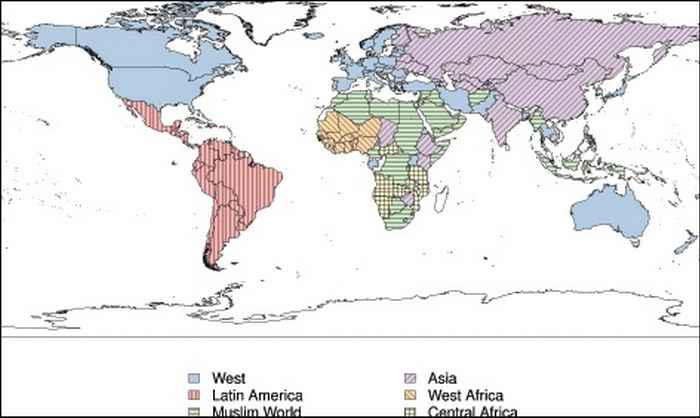Military alliances reflect Huntington’s categorisation of civilisations
21 October 2009

A new sociological classification of the world based on military alliances closely mirrors Samuel Huntington's categorisation of civilisations. The American political scientist's 'Clash of civilisations' theory is based around cultural and religious identity. The civilisations defined in this theory reflect a classification of the world based on military conflicts and alliances. This conclusion is the outcome of research by University of Amsterdam sociologist Jeroen Bruggeman and Vincent Traag of the Leuven Université Catholique. Bruggeman and Traag applied a new method that takes into account negative relationships, rather than focusing exclusively on positive relationships as had been the case in previous studies of networks. The results of their research were recently published in Physical Review E.
According to Samuel Huntington's article ‘Clash of Civilisations', the majority of twenty-first-century conflicts would be based around civilisational clashes. Huntingdon suggested that cultural and religious identity would become the main factor underlying modern global conflicts. He divided the world into a number of major civilisations. Opponents have claimed his theory widens the gulf between civilisations and questioned whether civilisations are as static as he claims them to be.
Applying a new research method, Traag and Bruggeman studied the network of international military conflicts and alliances. The result closely mirrored Huntingdon's categorisation of civilisations. ‘It was interesting to see that we basically arrived at the same categorisation,' Traag explains, ‘without having intentionally grouped together specific countries.' The categorisation was solely based around the military alliances between individual countries, and does not take into account any other relationships such as trade or subjective impressions.
Community detection
The researchers based their study on the principle of community detection. This method was originally developed in order to detect groups within networks based solely on positive relationships, such as alliances, friendships or collaborations. However, the method has proved to be ineffective in cases where the equation also includes negative relationships - conflicts. In order to counteract this problem, Traag and Bruggeman developed a new research method in which groups must have a relatively high density of positive relationships and a relatively low density of negative relationships. They applied this model to the network of international conflicts and alliances.The researchers detected six different centres of power: the West, Asia, the Islamic world, Latin America, West Africa and Central Africa. Contrary to Huntington's predictions, China and Japan do not form separate centres of power, but are part of Asia and the West, respectively. West Africa is also clearly demarcated from the rest of the African continent. There were also a number of striking exceptions: South Korea and South Africa are classified as part of the Islamic world, Iran is regarded as part of the West and Finland is classified as part of Asia.
According to the scientists, these centres of power are not unalterable. The study was limited to conflicts and alliances between 1993 and 2001. The current categorisation is probably very different from what it would have been 20 years ago, and will probably also be very different in 20 years' time. However, the researchers do not expect to see the categorisation change rapidly or easily, despite the certainty of individual shifts.